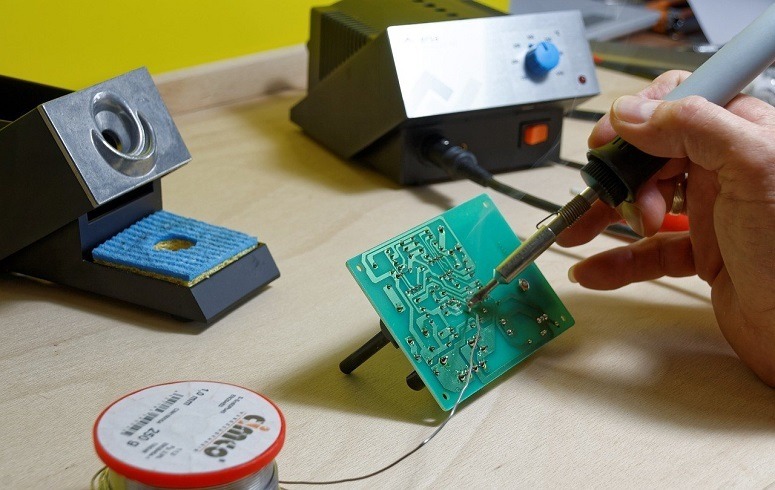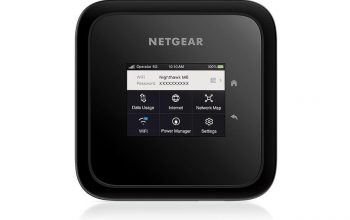
One talent that geeks really appreciate is soldering, however, not most of us know the correct technique. It’s a simple skill to increase your geek curriculum vitae, so let’s understand how plus some old projects from the shelf.
What’s Soldering?
A soldering iron is an instrument with a metallic suggestion that gets really hot. We’re speaking like 800 level Fahrenheit, if you can adapt the temperature on the good iron. Its job is to transfer high temperature to things such as cables, transistor leads, and pads on PCBs. Following the appropriate areas are warmed properly, solder is applied. If you anticipate soldering, then you’re better off spending $30-$40 on the 20-30 Watt iron rather than on an inexpensive $15 one. You’ll get a longer-lasting tool that is wonderful for a much wider variance of applications and you’ll get proper high temperature control on top of that. There’s also soldering weapons available, nevertheless, you should only use these when restoring thick cables rather than on PCBs, as the tips have a live voltage running right through them that can harm sensitive electronics. Check out this soldering iron guide for more information
Solder is a slim pipe, usually rolled in spools, manufactured from various steel alloys. Its job is to carry the average person components together. The average person components and their amounts can vary, but also for computer consumer electronics, you’re usually taking a look at a 60% tin and 40% business lead. Lead-free solder is also available, though they have higher melting temps and less “wettability, ” meaning you might need a much better soldering iron to utilize it and removing it could be more tiresome. Lead-free solder is way better for the surroundings and has other benefits, plus they function pretty much the same manner.
The within of the pipe is filled up with “flux, ” an element that eliminates oxidation and helps clean the areas mixed up in fusing process. For digital use, you want rosin-core/rosin-flux solder. Acid-flux is utilized in domestic plumbing and the acidity may damage the delicate components on PCBs.
Safety First!
Many who’ve never used a soldering iron fear so much harming equipment, but more important is the risk to yourself! Soldering irons get really hot (think, and solder itself is molten metallic. Make sure to wear safety eyeglasses, keep loose clothing and locks taken care of, and become careful with your fingertips. On top of that, use defensive gloves. Solder can contain business lead, so make certain to wash the hands thoroughly after managing it. It’s also important to work in a well-ventilated area because the fumes from the rosin can damage your lung area when inhaled. Truthfully, it’s more prevalent sense and planning than anything. Simply take proper safety measures and you’ll be fine.
Cleaning and Tinning the end
To be able to conduct high temperature properly, your soldering iron must be free from any old solder. After exposure to thus insulates against heat, air and it oxidizes. We want high temperature to perform so that people can apply everything quickly and effectively. A dirty suggestion means that you’ll have to carry the iron on longer and risk high temperature harm to the PCB, and no one desires that. Keep a moist sponge handy, and following the soldering iron is completely warmed, softly scrape it against the sponge to eliminate old solder. The end should be nice and bright, or at least very near to it.
Next, we’re heading to “tin” the end. This will protect the end and allow temperature to carry out better via the existence of new solder. For the hot iron, carefully apply a little amount of fresh solder and coating the tip. It will still be sparkly if you’ve done it right. Once you tin the end you should start soldering your components collectively. After each few joins, clean and re-tin, and again before placing your iron away into storage space. This will really help boost the durability of your tool. An excellent soldering iron should easily last years this way.
Joining Parts
Contain the iron in your dominating hand and an extended little bit of solder in your other hands. When soldering two components collectively, you want to touch the region where they sign up for with the soldering iron. Keep it there for approximately another, then slip the solder within the suggestion of the iron, sandwiching it to the PCB ( make reference to above image, cursor factors to solder). Keep it for another second or two, nourishing in how much solder you will need. This amount will change with respect to the project, software, and size of the solder, so check your instructions and research the pictures to obtain a good notion of the eliminate result.
Now, this is actually important. Distance themself the solder first, and continue keeping the iron for another second. This enables the solder to keep to melt and pool, developing a good joint. Then, you can take away the iron. The full total process shouldn’t take more than 5 mere seconds, and usually you’re targeting 3-4.
Wait a couple of seconds and don’t disturb the solder. It cools rapidly, but moving or blowing on the joint may cause it to deteriorate. A poor solder connection can look really oxidized, excessively boring, and grainy. In addition, it sort of appears like a ball of solder created on the region. An excellent connection should be easy and uniform, and its own edges will be concave. It won’t appear to be an elevated ball, it’ll look toned.


